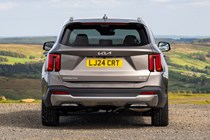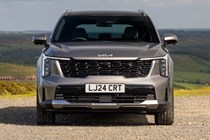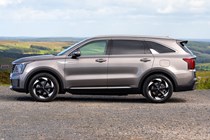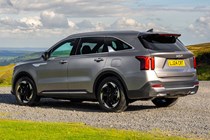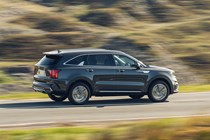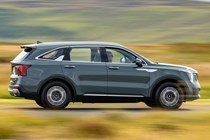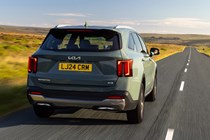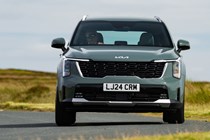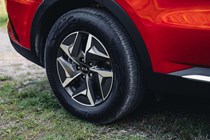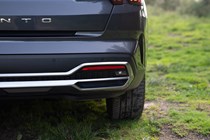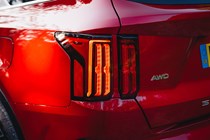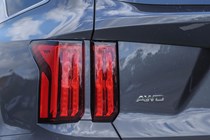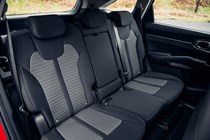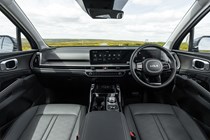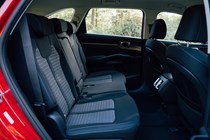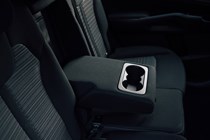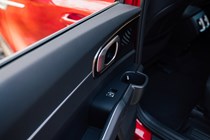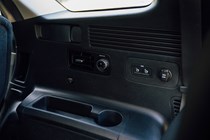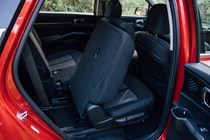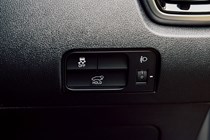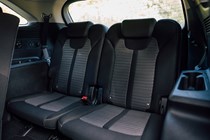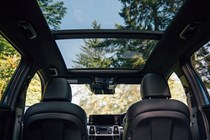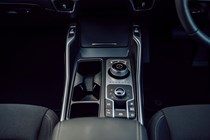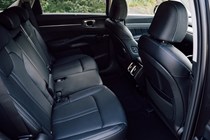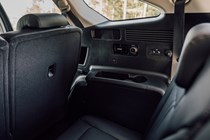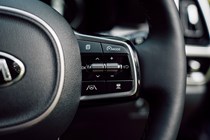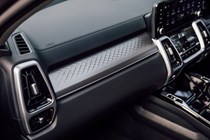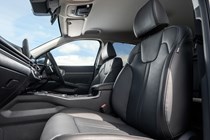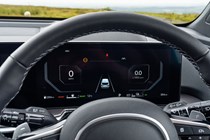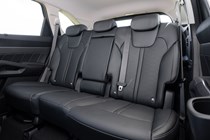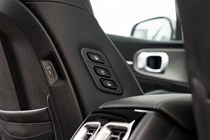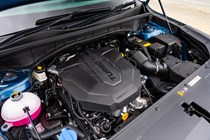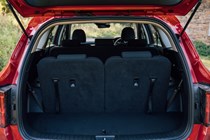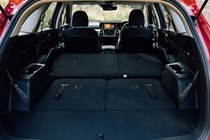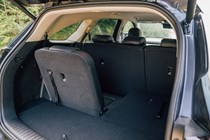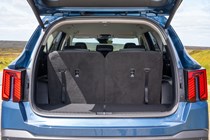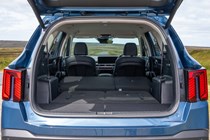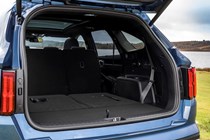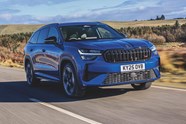Kia Sorento review
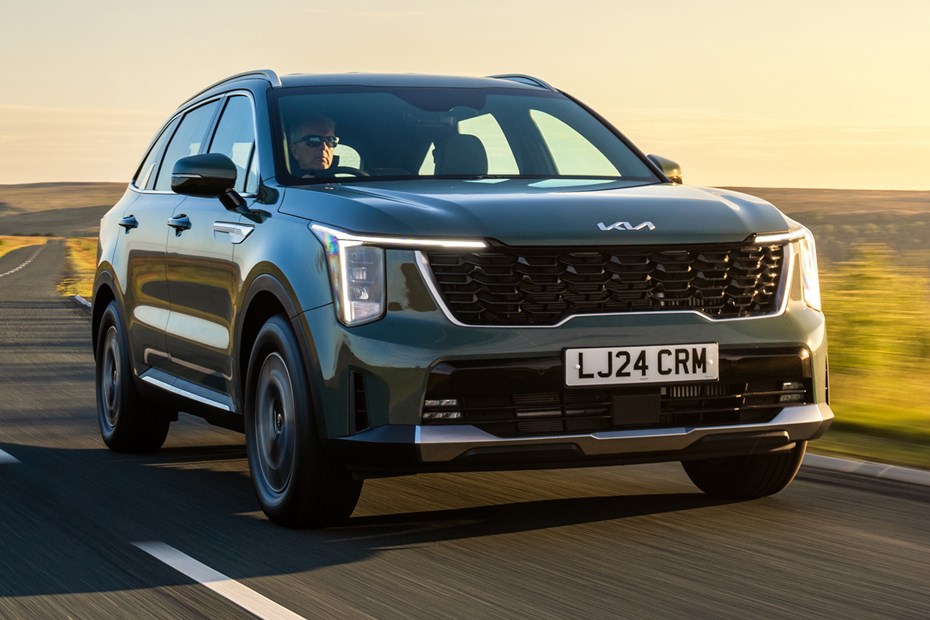
At a glance
| Price new | £43,505 - £56,105 |
|---|---|
| Used prices | £21,005 - £49,390 |
| Road tax cost | £620 |
| Insurance group | 25 - 34 |
Get an insurance quote with

|
|
| Fuel economy | 38.2 - 43.5 mpg |
| Miles per pound | 5.4 - 6.2 |
| Number of doors | 5 |
| View full specs for a specific version | |
Available fuel types
Diesel
Hybrid
Pros & cons
- Flexible cabin seats up to seven
- Plug-in hybrid works well in town
- Quality, fit and finish are excllent
- Hybrid model struggles on fast roads
- Ride can be quite unsettled at times
- Third row of seats cramped for adults
Kia Sorento SUV rivals
Overview
The Kia Sorento is a hybrid- and diesel-powered seven-seat SUV, which offers MPV levels of practicality and more than enough SUV attitude to keep large family car buyers happy. It also plays a leading role in Kia’s assault on the premium car segments – and, with a starting price of a little over £40,000, it’s cheaper than before, and certainly priced to compete with a broad spectrum of rivals.
But tackling the premium segment isn’t easy for Kia, hence it being refreshed in 2024, a little more than three years after its original launch. The Sorento is up against a glut of well-established upscale SUVs, such as the Land Rover Discovery Sport, Mercedes-Benz GLB and Peugeot 5008. The Volkswagen Group also fields its closest competitors, such as the SEAT Tarraco and the new Skoda Kodiaq.
The visual refresh gives the car a rather striking look. So, it gets new vertical headlights and ‘star map’ daytime running lights to help it stand out from the crowd. Some tweaks have been made to the suspension and steering, but the recipe remains essentially the same.
The range comes in three trim levels – ‘2’, ‘3’ and ‘4’ – with a choice of a 2.2-litre diesel, 1.6-litre turbocharged-petrol hybrid, and a 1.6-litre plug-in hybrid (PHEV) being offered on all of them. There are no manual versions, with all models having automatic transmission, with the petrol-powered cars getting six speeds and the diesel eight.
Standard equipment includes 19-inch alloy wheels, LED headlights, a wireless smartphone charger, a 12-speaker Bose stereo system, ventilated leather seats and all the safety kit you’d expect on a car of this type. It also comes with fingerprint recognition, dual curved 12.3-inch displays for its excellent infotainment set-up, ambient lighting, and a customisable head-up display.
Granted, you’ll find most (if not all) of this equipment on the Sorento’s rivals. However, few competitors can match Kia’s excellent seven-year warranty and lauded dealer network. The question is, does this refreshed seven-seater offer enough of a premium edge to make faithful Land Rover customers abandon their brands? This has certainly been the case with the all-electric Kia EV9, further up the price lists, and it’s easy to see why the Korean firm is trying to emulate that car’s style here.
Over the next few pages, we’ll review each aspect of the Kia Sorento, reflecting on its practicality, interior quality, technology, running costs and driving experience. Read on for everything you need to know about this full-sized seven-seater SUV, or head over to our how we test cars page to find out why we put cars through the trials that we do.



